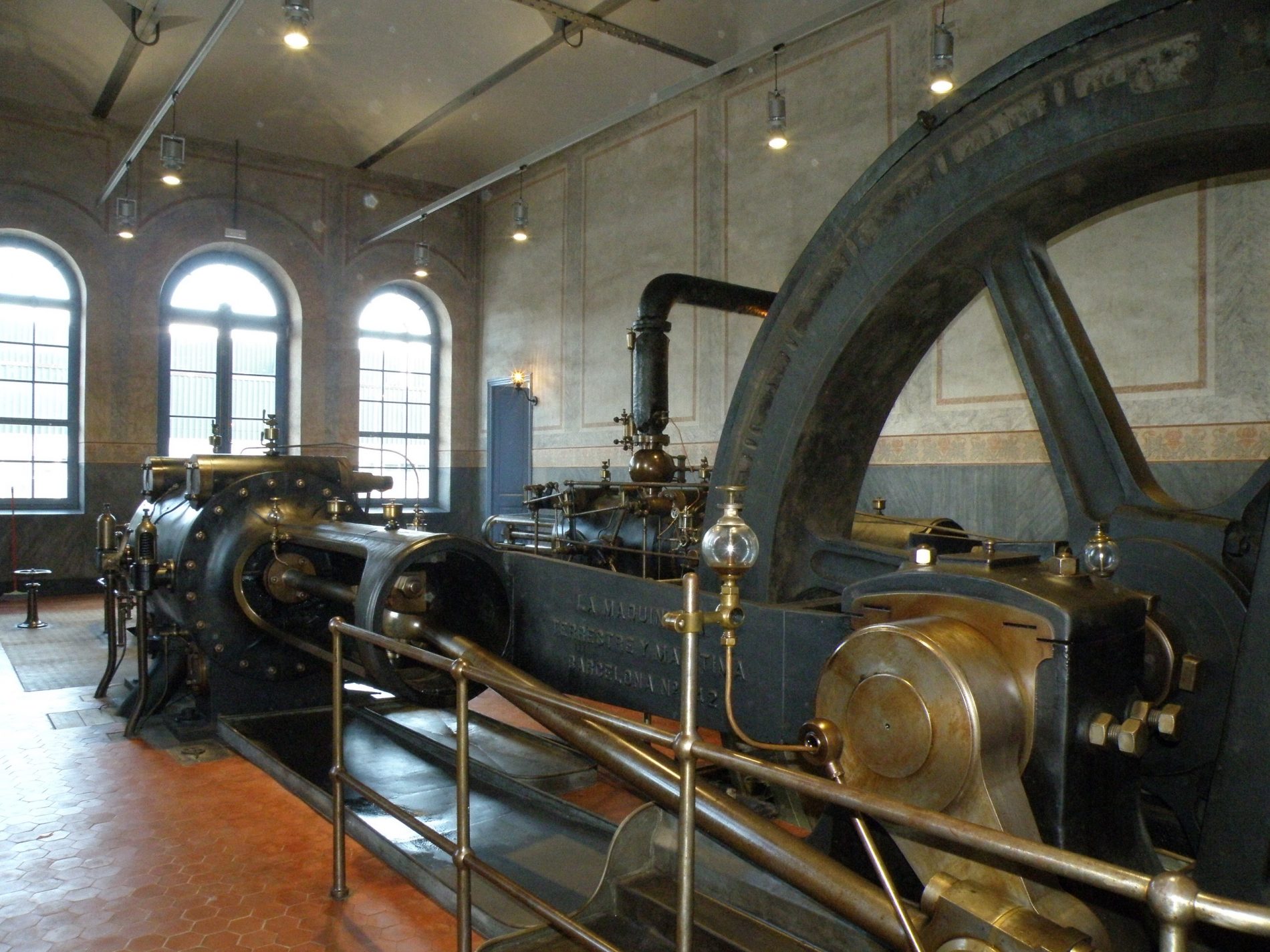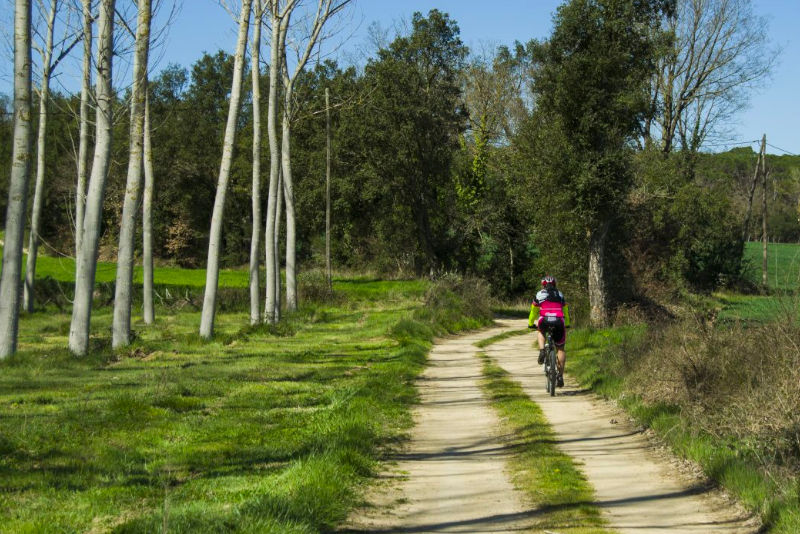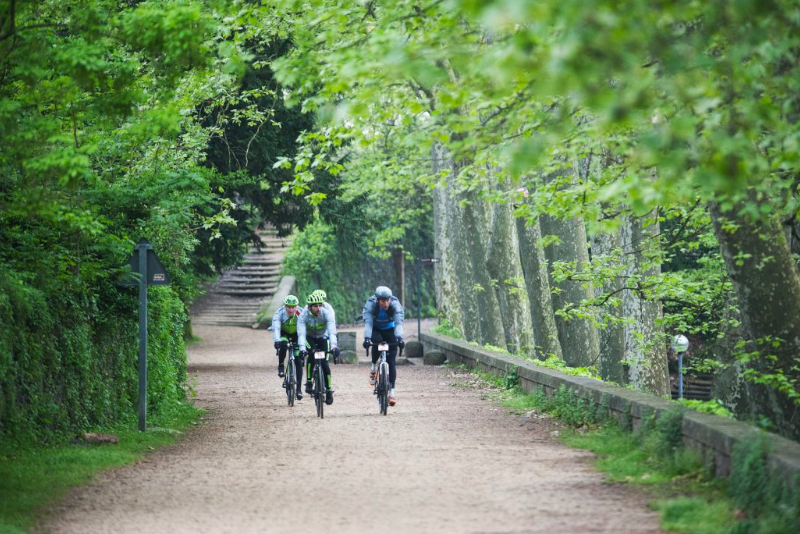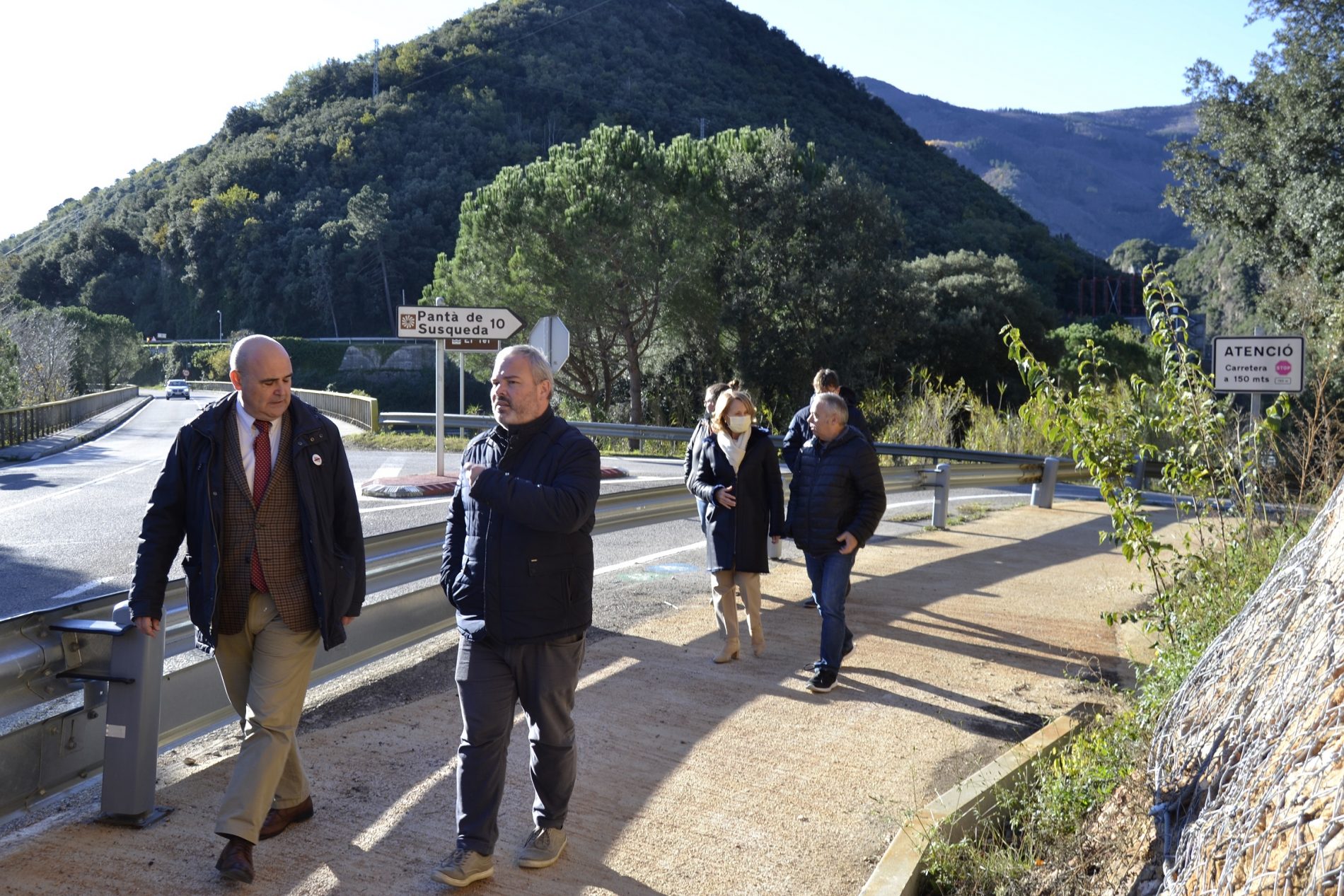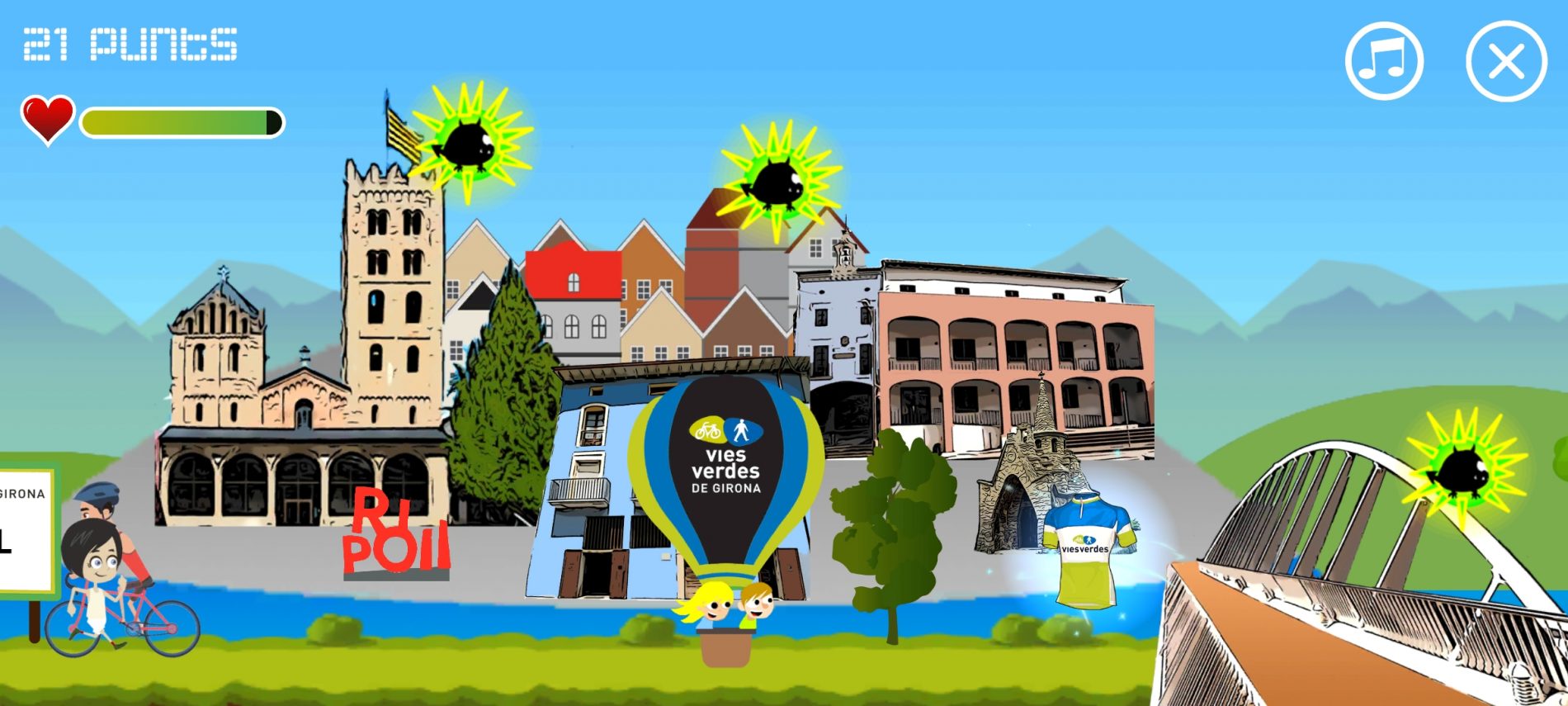What to visit
Anglès
Carrilet I Route
Carrilet I greenway
1. THE BURÉS VAPOR (STEAM ENGINE)
Within the premises of the Burés textile factory a jewel of the industrial heritage of Catalonia is still intact: an immense steam engine built during the year 1900 by the “Maquinista Terrestre I Maritima de Barcelona”. Bearing in mind that the steam engines have very characteristic elements such as the steering wheel, the pistons, grease guns, and even the regulator, it is very difficult to find a machine of the year 1900 which still has all these elements and, at the same time, is in a perfect state of conservation. No doubt this machine is the one in the best state of conservation in the whole country, and still in its original location. The steam engine is set up in a pavilion next to factory nº3. The hall is perfectly decorated with stucco borders and beautiful sgraffito, the original colours of which have been preserved. The floor is paved with tiles of fine red terracotta. In the middle of the warehouse one can see large steam engine. Which worked for the last time during the year 1955. Nowadays, this engine has been restored and works through power provided by a small electric motor. Also, in a hall next to the steam engine, one can see the coal bunker and two boilers, also by the “Maquinista Terrestre I Maritima de Barcelona, which generated the necessary steam for the said device to work.
2. THE OLD TOWN
Walking along the streets and alleys of the old town is akin to visiting a magnificent open-air museum, with numerous architectural styles that give it a singular and, at the same time, spectacular aspect. Strolling around this area, which is the most elevated of the town, one can contemplate impressive buildings which allow direct observations of the evolution that rural Catalan architecture has experienced from medieval times until the “Noucentisme” period [early 20thcentury]. This collection of historic buildings presents different architectural styles. Among the most important ones are Romanic, Gothic, and “Noucentista”. Of the three, the one which most stands out, because of the greater number of buildings with related characteristics, is the Gothic, which could be classified as late Gothic/early renaissance. Walking through this area one can observe that the buildings present three typologies that have their origin in the medieval period. Medieval houses. Which are buildings of one or two levels, to which lofts have sometimes been added that stand out by virtue of having very small windows framed with stones; Gothic mansions, which usually have a ground floor and two upper-levels, that present a symmetric composition with spectacular lintelled entrances, large windows with lobed arches and beautiful lintels engraved with diverse inscriptions and ornaments; and also transformed medieval houses, buildings which have suffered a transformation and reordering of the façade to obtain more light by widening the old windows and opening balconies. Many of these houses and mansions which can be admired today were originally single-family homes basically dedicated to agricultural use and which would have a front door of large dimensions. One or two floors for living quarters and a loft, with was used as a barn.
3. SAINT AMANÇ
The old parish church of Sant Amanç, mentioned from the year 1019 as “Sancti Amancii Anglensis” is the original parish of the neighbourhood which carries its name. It is one of the four parishes which were within the territory that made up the former area of the castle, which depended on the diocese and country of Girona. This church is situated in the southern municipal area of Anglès, on a hill set deep on the northern slope op Santa Bàrbara. To reach this place take the C-63 road, which goes from Anglès to Santa Coloma de Farners. At 9.5 Kms turn to the right and go up a forest track which enters towards the north of the mountain of Santa Bàrbara. After approximately one kilometer one arrives at the house “Can Soldat” and further on, about 200 metres higher, one can see the building situated above a hill on the right-hand side, towards the west. If going on foot it is advisable to leave from Plaza de la Rutlla, following the road which goes to the neighbourhood of Can Serra and, once at the roundabout situated at the end of the neighbourhood, to take road towards the left which goes to the mines of Sant Pare.Then take the old royal road which, passing by the side of the old miners houses, goes up by the side of the Rissec steam, which will be on the right hand side. The scenery is magnificent, and, in addition, the route follows the old medieval road which used to connect Anglès with Santa Coloma de Farners. This route, which passes by the house “Can Rissec”, one of the oldest “pages” [farm] houses of this area, comes to an end approximately two kilometres from the chapel, then follow a forest track which goes up the mountain towards the chapel, bearing in mind that the church will be on the left-hand side. Sant Amnç is a Romanic church, of complex structure, rectangular.
